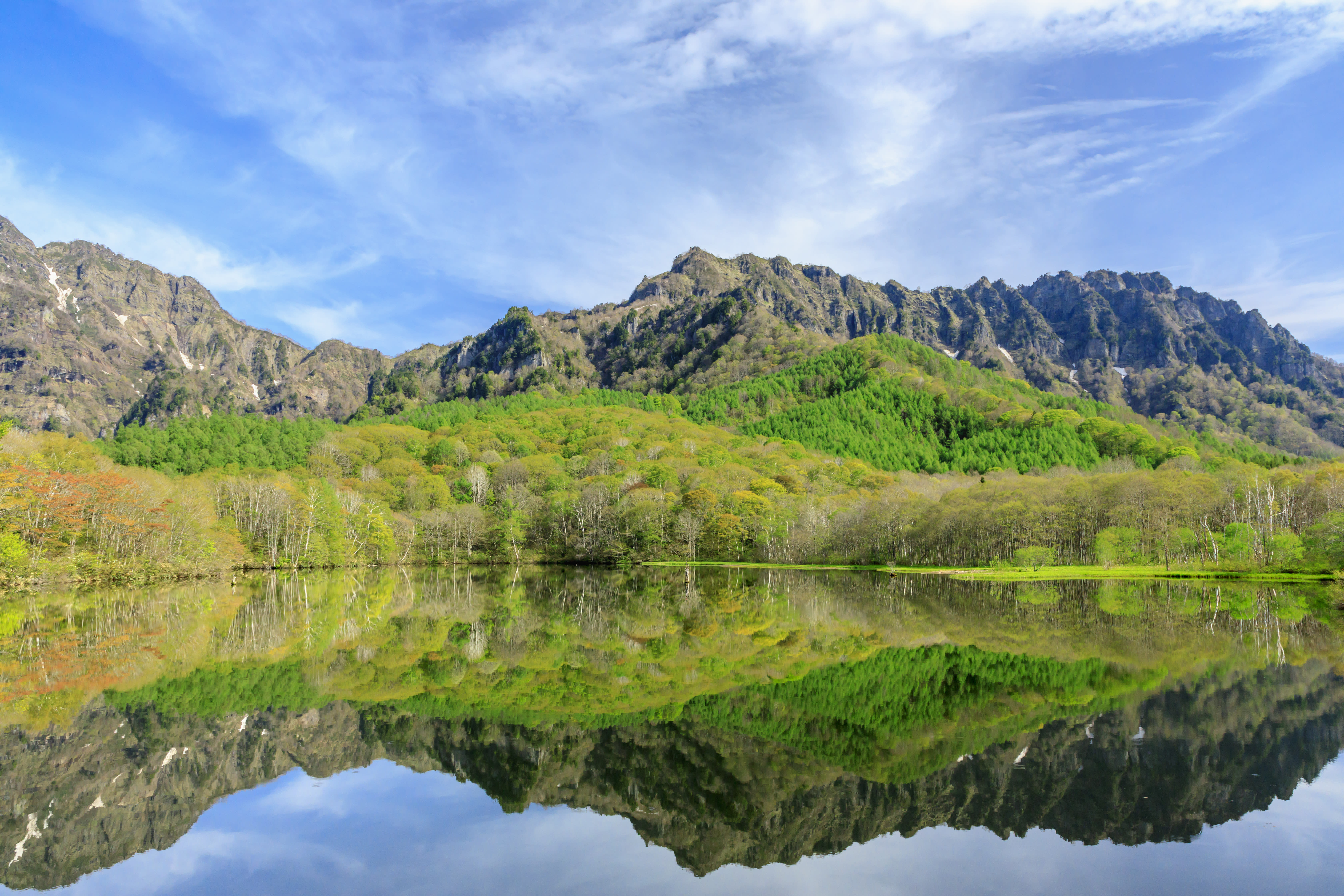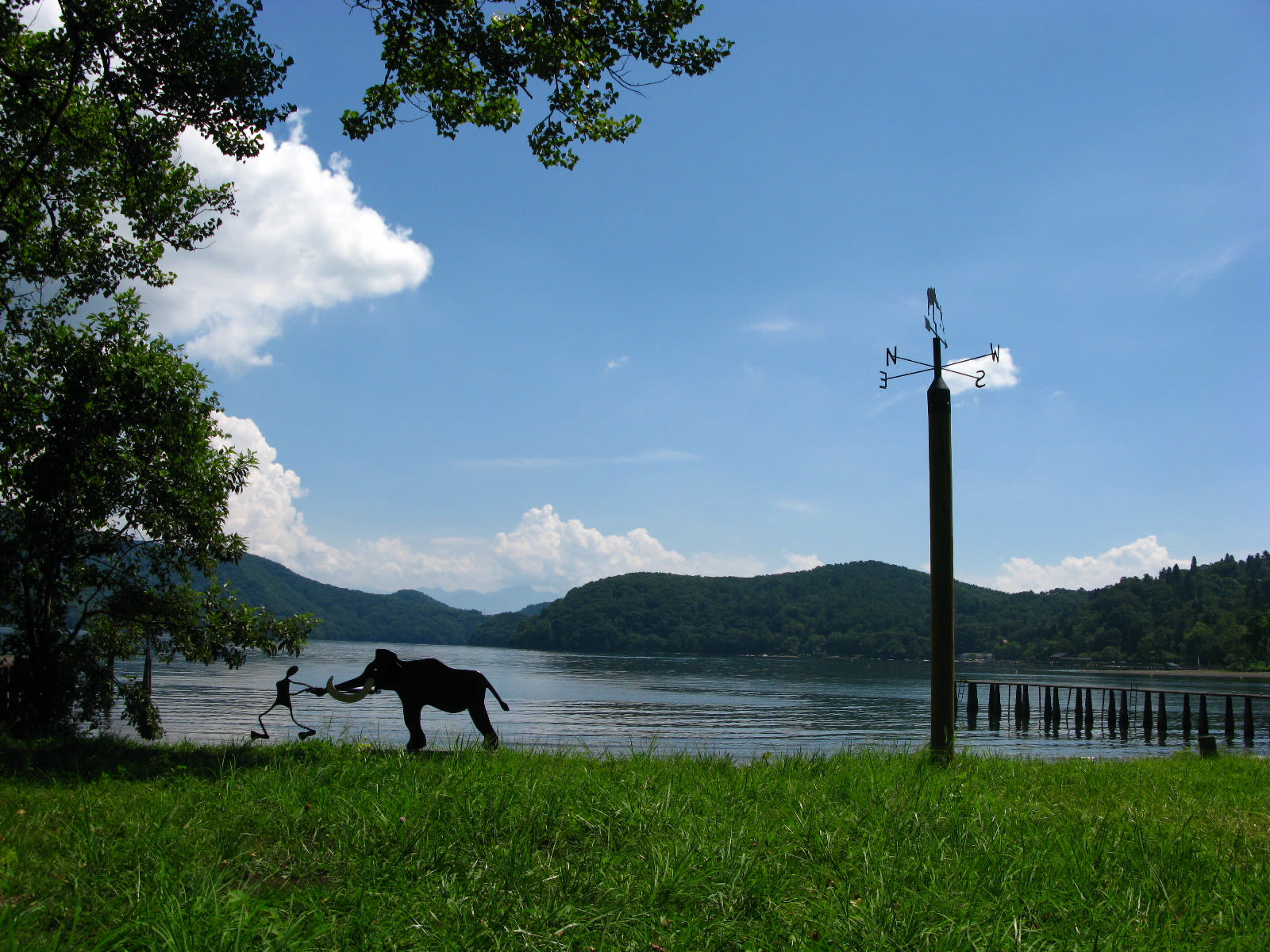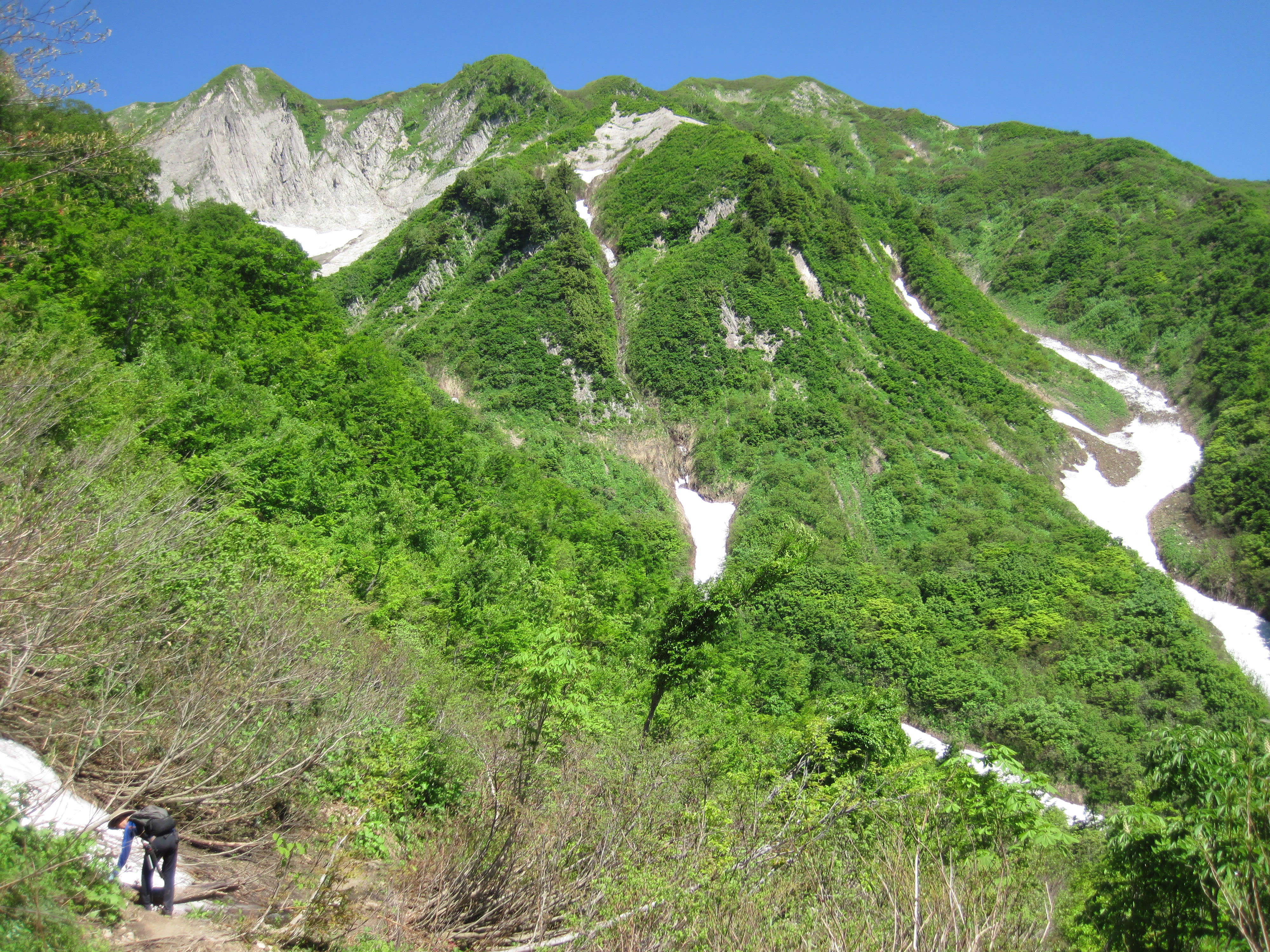Togakushi Area
Mount Togakushi and the surrounding area have deep connections with esoteric Buddhist practices, mountain worship and Japanese mythology. Mountain ascetics and pilgrims have inhabited the area for centuries. Five Shinto shrines founded at least 1,000 years ago are the main draws here: Okusha, Chusha, Kuzuryusha, Hinomikosha and Hokosha shrines. Togakushi Kodo, an ancient trail that winds across forested slopes and past crystalline ponds, connects the shrines.

Togakushi-jinja Okusha Shrine (Upper Shrine)
Okusha Shrine (Upper Shrine), set on the slopes of Mount Togakushi in the upper shrine area, is particularly stunning. Its approach is marked by a massive thatched-roof gate and lined with over 300 towering cryptomeria trees. Next to it is the smaller Kuzuryusha Shrine, or “shrine of the nine-headed dragon,” dedicated to the god of rain. If you walk 2 kilometers down to Chusha Shrine (Middle Shrine), you’ll discover a small waterfall and sacred trees, some over 800 years old. If you take a different trail, you’ll find Kagamiike Pond—the “mirror pond”—which reflects both the sky and the magnificent Togakushi mountain range.

Kagamiike Pond
Togakushi Forest Botanical Garden is a great place to familiarize yourself with the local flora and fauna. As you walk around the wooden promenades, look out for birds like the Narcissus flycatcher, Eurasian wren and white-backed woodpecker. If you choose to drive along Hokushin Gogaku Road near Iizuna Town, you’ll pass by peach orchards and paddies, framed by the stunning backdrop of Mount Kurohime, Mount Myoko, Mount Iizuna and the Togakushi mountain range. Afterwards, treat yourself to the local specialty—handmade Togakushi soba noodles. These noodles are usually served in hand-woven bamboo baskets. You can make similar baskets with expert help at the Togakushi Bamboo Craft Center (reservations required).
Lake Nojiri Area
Lake Nojiri offers plenty of recreational possibilities, situated in the far eastern part of the park with views of Mt. Kurohime and Mt. Myoko to the west. Stretch out on a sailboat, kayak on the calm waters of the lake, or try your hand at stand-up paddleboarding. You can also take a guided tour to forage for mushrooms in the nearby woods or visit a local brewery. When the lake freezes over in winter, go ice-fishing for smelt.
For a sweeping bird’s-eye view of Lake Nojiri and the surrounding mountains, take a ski-lift to the Bokodai Observatory in Kurohime Kogen Snow Park, or pay a visit to Nojiriko Terrace in the Tangram Madarao resort.
The bottom of this serene lake is an excavation site. Scientists have pulled up hunting tools from 40,000 years ago, fossils of Naumann elephants (Palaeoloxodon naumanni) and a colossal elk called Yabe’s giant deer. You can see examples on display at the Nojiriko Museum.

Lake Nojiri
Further west is Naena Falls. Locals call this 55-meter cascade “the earthquake waterfall” because of its loud, roaring sound. You can view the falls up close from a suspension bridge.

Imori Pond
Imori Pond, brimming with aquatic plants and surrounded by white birch trees, sits at the base of Mount Myoko. Pay a visit to the nearby Myokokogen Visitor Center to learn more about the local wildlife and culture.
Mount Hiuchi Area
Mount Hiuchi and Mount Myoko receive heavy snowfalls, making them immensely popular among skiers and snowboarders. Mount Hiuchi also has excellent hiking trails to walk during the summer. A trek that includes an overnight stay in a mountain hut will take you past the stunning Koyaike Pond and through fields of Hakusan kozakura (Primula cuneifolia Ledeb. var. hakusanensis Makino) and the flower-clad Tengu-no-Niwa Marsh—all set against the stunning backdrop of Mount Yakeyama and Mount Hiuchi. The area is the northernmost habitat of the rock ptarmigan, which you might spot along the way.
The hike ends at the scenic Sasagamine Highlands, marked by vast swathes of cattle pastures, buttercup fields and forests of large beech and oak trees. At an altitude of 1,300 meters, the area stays cool even in the summer. Follow Yumemidaira Nature Trail or Sasagamine Nature Trail to get familiar with the highlands, and have a picnic by one of two ponds (Shimizugaike Pond or Senninike Pond) along the way. After a day of hiking and activities, relax at one of the many hot springs scattered throughout the park, such as Akakura Onsen or Seki Onsen.

Mount Hiuchi
Mount Amakazari Area
Standing at the western end of the park, 1,963-meter Mount Amakazari offers spectacular views of Japan’s Northern Alps and the Sea of Japan. Hike to the rocky summit or walk among rows of giant beech trees near the base.

Mount Amakazari
The beech forest enfolds the glass-clear waters of Kamaike Pond, whose name translates as “Sickle Pond,” thanks to its distinctive crescent shape. Local legend says the tears of a mythical snake formed the pond. Autumn is a great time to walk the pretty 40-minute circuit around this pond when the surrounding trees are tinged with crimson and gold hues.
Unwind after a day of hiking with a visit to Otari Onsen, a hot spring founded over 450 years ago. Alternatively, soak in the open-air baths of Amakazari Onsen, situated near the Echigo Trailhead of Mount Amakazari.

Kamaike Pond surrounded by beech trees
Culture
The most famous myth associated with the Togakushi area also inspired its name, which means “hidden door.” The sun deity Amaterasu had gone into a cave and sealed the entrance with a giant stone. Her absence plunged the world into darkness, so the other divinities staged a wild dance party to lure her out. When she peeked outside, another deity grabbed the stone and heaved it away. That rock became Mount Togakushi.
For centuries, Mount Togakushi and Mount Iizuna have attracted practitioners of Shugendo—a fusion of esoteric Buddhism and local shamanistic religions—who roam the wilderness in search of enlightenment and inner strength.







